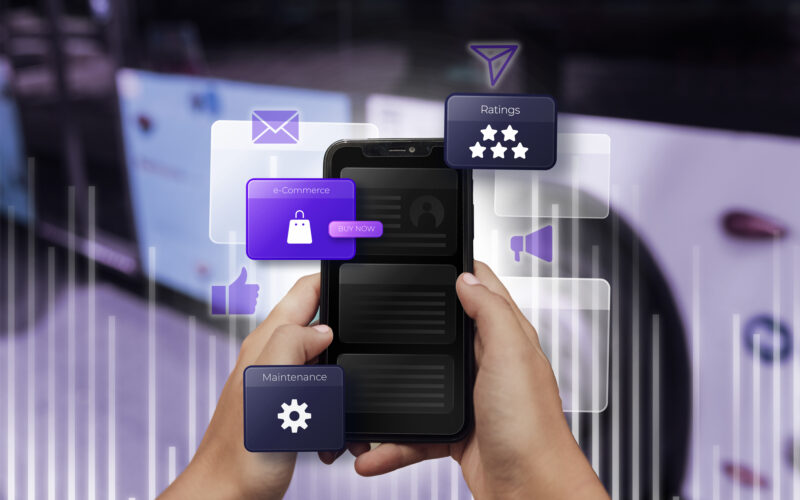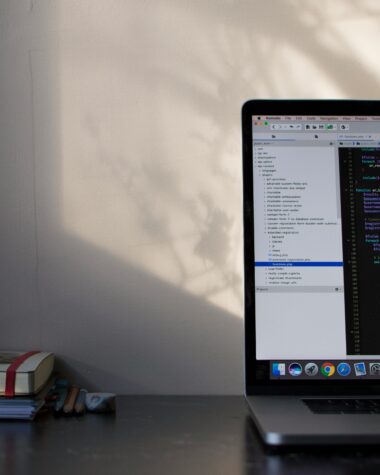Launching a mobile app startup is exciting, but it’s also full of potential pitfalls. The harsh reality is that most startups don’t succeed. Research shows about 90% of startups ultimately fail, and nearly 42% of failures are due to building a product with no market need. In such a competitive app ecosystem, avoiding common mistakes can make the difference between joining the failures and becoming a success. Below we break down the most common mobile app development mistakes that plague startups, and how to avoid them to improve your chances of success.
1. Skipping Market Research and Idea Validation
The Pitfall: Many first-time founders dive straight into development based on a “great idea” without confirming that real users actually want the app. Failing to validate market demand is one of the costliest mistakes; lack of market need is cited as the top reason startups flop. In other words, nearly half of failed startups built something that people didn’t actually want. Skipping market research means you risk pouring time and money into an app that solves no compelling problem for a viable audience.
Founders often get caught up in passion and assume everyone will love their idea. But without data, that’s just guessing and guessing wrong can be fatal. You might target the wrong customer, build features for a market that’s too small, or create a product already offered by competitors. Building an app no one asked for is like launching a solution in search of a problem.
How to Avoid It: Do your homework before you code. Rigorous market research and idea validation should be your first steps. This includes identifying your target users and confirming they have the problem your app aims to solve. Conduct surveys, user interviews, and gauge interest via tools like Google Trends or landing page campaigns. Analyze the competition: is your idea truly unique or better than what’s out there? For example, before investing heavily, create a simple landing page describing your app concept and see if users sign up or express interest. If nobody responds, that’s a red flag; strong interest or pre-signups, on the other hand, validate demand. The goal is to validate your concept from every angle. If research reveals a lack of interest or an oversaturated market, pivot or refine your idea early, better to adjust now than after spending thousands on development. As experts put it: measure twice, cut once. Thorough market validation upfront will save you an immeasurable headache later.
2. Overloading Features Instead of Starting with an MVP
The Pitfall: You have a grand vision and want to deliver every feature on day one. Many startup founders make the mistake of trying to build a “kitchen sink” app packed with features to please everyone. The result is usually a blown-up budget, costly delays, and a bloated product that still misses the mark on core user needs. Overbuilding is a classic rookie error. While you keep adding features, you launch late and give competitors time to gain users. Each extra feature multiplies development time and cost, so your budget explodes. A complex first product is also harder to test and often overwhelms or confuses early users. In short, when you decorate your initial app with every shiny idea, you end up with something cluttered, expensive, and slow to ship. Quality suffers because the team is spread thin, and nothing works exceptionally well
The Consequences of Feature Creep:
- Budget overruns: Each additional feature multiplies development time and costs, quickly blowing up your budget.
- User confusion: Too many options create decision paralysis for users, leading to a poor user experience.
- Delayed launch: While you’re busy adding features, more focused competitors can launch sooner and start capturing market share.
- Lower quality: Spreading your resources across countless features means none get polished; overall quality suffers and bugs proliferate.
How to Avoid It: Think MVP Minimum Viable Product. Embrace a strategy of starting small and focused. An MVP is the simplest version of your app that still solves the core problem for users. Instead of building every nice-to-have feature, identify the one or two features that deliver the primary value and do those exceptionally well. Everything else can come later. This isn’t about abandoning your vision; it’s about sequencing it intelligently. By launching with a leaner product, you can get to market faster and start gathering real user feedback to guide further e-commerce development.
Prioritize features ruthlessly. One helpful technique is the MoSCoW method (Must-have, Should-have, could-have, Won’t-have) to categorize features by priority. Focus on the must-haves that solve the core user problem first, and save the “could have” enhancements for future updates. Real-world success stories show the value of starting with a narrow focus; for example, Airbnb began just enabling people to rent air mattresses in apartments, and only later added photography, insurance, and other extras. By launching with a focused MVP, you not only save time and money, you also avoid building features that users don’t actually want. As LinkedIn co-founder Reid Hoffman famously said, “If you are not embarrassed by the first version of your product, you’ve launched too late.” The idea is to get a basic product out early, then iterate in public and let users steer you, rather than hiding in the workshop trying to craft the “perfect” app from day one.
3. Underestimating the Budget and Development Timeline
The Pitfall: “It can’t be that expensive or time-consuming to make an app, right?” Famous last words of many first-time founders. A very common startup mistake is severely underestimating what it takes in terms of cost and time to build a high-quality mobile app. Entrepreneurs often set unrealistic budgets (e.g. assuming they can build the app for $5k or $10k) only to discover real quotes come back an order of magnitude higher. The truth is, developing a custom mobile app is a significant investment. Industry data shows the average cost of developing a mobile app ranges from about $80,000 to $250,000 USD for a professional product. Even a relatively “basic” app can easily cost tens of thousands once you account for graphic design, development, testing, and infrastructure. If you don’t plan for those costs, you risk running out of money halfway through development, resulting in a half-finished product or major quality compromises.
Time is the other side of the coin. Quality software doesn’t materialize overnight. On average, 3 to 6 months of development is typical to get an app to launch-ready state, and more complex apps can take 8 to 12 months or more. Yet some founders assume they can go from idea to App Store in a few weeks, which leads to a rude awakening. Underestimating timelines often results in missed launch windows, blown marketing plans, and general frustration. Under-budgeting is even more dangerous if you run out of funds mid-project, development stalls and you may end up with nothing to show. A flawed budget or timeline can derail your entire startup’s operations and growth.
Why do founders underestimate so badly? Non-technical entrepreneurs may not realize all the steps required from initial wireframing and design, to front-end and back-end coding, integration of third-party APIs, rigorous testing on multiple devices, fixing bugs, and navigating app store approvals. Each of these stages takes expertise, resources, and time. Custom features (complex algorithms, AI, real-time syncing, etc.) significantly increase scope. It’s also easy to fall into “just one more feature” syndrome, which adds weeks or months of work. And remember, if you want to launch on both iOS and Android, that can nearly double the effort (unless you use a cross-platform tech stack, which has its own trade-offs).
How to Avoid It: Go in with eyes wide open and a solid plan. Educate yourself on what app development typically entails. Talk to experts or development firms (many offer free consultations) to get detailed estimates for both time and cost before you start writing checks. A trustworthy development partner will break down the expected hours for design, development, testing, project management, etc., so you understand the true effort required. Be wary of unrealistically low bids if a quote sounds too good (fast/cheap) to be true, it probably is. Many founders have gone with the cheapest offer only to pay dearly later when the project stalls or the poor code quality causes endless delays.
When planning, always add a buffer for the unexpected. Software projects can encounter surprises: maybe a third-party service changes its API, or early user testing reveals a feature needs rework. It’s prudent to add ~1520% contingency on both budget and timeline as padding. Also, prioritize features (tie back to your MVP plan) so that if you do start running tight on time or money, you can cut lower-priority features rather than jeopardizing the whole project.
Another strategy is to plan development in phases. For instance, phase 1 might be the core app for one platform; phase 2 adds nice-to-have features or the second platform. This phased approach lets you spread out costs and perhaps get an initial version launched to start generating traction or revenue while still working on the next phase. The key is to treat your app like a serious business venture. It approaches budgeting and scheduling with realism and rigor. Secure enough funding before you start, and don’t assume everything will go perfectly. With proper upfront planning (and a bit of patience), you’ll set your product up for success rather than setting yourself up for stress.
4. Neglecting UX Design and Platform Guidelines
The Pitfall: In the rush to build functionality, some startups overlook the user experience (UX) and design aspects of their app. Founders might think as long as the app “works,” design can be an afterthought. This is a critical mistake: even if your app idea is brilliant, a poor UX or sloppy interface can undermine everything. Users today have zero patience for apps that are confusing, unintuitive, or ugly there are plenty of alternatives just a tap away. In fact, even if you manage to get people to download your app, about 23% of users will abandon it after a single use. Nearly one in four users open an app once and never come back, often because the first impression was frustrating or underwhelming. Issues like unintuitive navigation, cluttered screens, inconsistent layouts, or just a bland, generic design can drive your hard-won users straight to a competitor. Simply put, “UX can make or break an app.”
One common design pitfall is not accounting for platform differences. Designing your app the same way for iOS and Android is like wearing the same outfit to a job interview and a beach party. Technically it’s clothing, but it won’t work well in either situation. Each mobile platform has its own design language and user expectations. If you take a generic one-size-fits-all approach, you end up with:
- Confused users who find the app doesn’t behave intuitively for their device.
- App store rejections for not following Apple’s or Google’s interface guidelines. An overall poor user experience that feels “off” or foreign on both platforms.
For example, iOS apps typically use bottom tab navigation and subtle design touches, whereas Android apps favor material design, bold colors, and a navigation drawer menu. Users on each platform are accustomed to their own “look and feel.” If your design ignores these conventions, it creates friction.
How to Avoid It: Make UI/UX design a top priority from day one not an optional add-on. Invest in good design, either by hiring an experienced UX/UI designer or working with a development agency that has a strong design team. A great designer will ensure your app is not just functional, but intuitive and enjoyable to use. Key principles include simple and consistent navigation, clear visual hierarchy (so users aren’t overwhelmed), and pleasing aesthetics aligned with your brand. Aim to delight users the bar for user interface quality in 2025 is extremely high. Tech giants have trained users to expect slick, seamless interfaces and near-flawless performance. If your app feels clunky or half-baked, users will bail quickly (and likely leave a bad review on their way out).
Also, design “native” to each platform when possible. This doesn’t mean you need completely separate designs, but do follow the platform-specific guidelines and UI patterns. For iOS, follow Apple’s Human Interface Guidelines and use native iOS components; for Android, follow Google’s Material Design guidelines. Ensure things like navigation, typography, icons, and gestures feel at home on each platform. Many successful apps maintain a consistent brand feel while still adapting to platform norms for instance, Spotify’s iOS app uses iOS-standard tabs and iOS-style gestures, while their Android app uses material design components like a floating action button, yet both versions feel unmistakably “Spotify”. The takeaway: design with the user in mind. If you’re not skilled in UX, don’t hesitate to bring in someone who is. It’s an investment that will pay off in higher user satisfaction and retention.
5. Skipping Quality Assurance and Testing
The Pitfall: Rushing to launch without thorough testing is another grave mistake. New founders sometimes skimp on professional QA (Quality Assurance) to save costs, or they assume that if the app “basically works,” that’s good enough. But working isn’t enough, it needs to work well. Users won’t tolerate glitches, crashes, or slow performance. If your app is unstable or buggy, expect users to delete it immediately. In fact, around 70% of users will drop off if your app is too slow or laggy. People have come to expect things to work instantly; if your product lags or crashes, they’re gone. There are no second chances for a bad first impression. Apps with poor stability also attract negative reviews, which will hurt your app store rankings and deter others from downloading. Some founders also fall into the trap of thinking “we’ll fix bugs after launch” or that users will report issues that can be patched later. This is a dangerous mindset by the time users encounter major bugs (if they even bother to report them), you’ve likely already lost those users and earned bad ratings. Remember, there are millions of apps out there; users won’t stick around through a buggy experience when alternatives are easily available.
How to Avoid It: Test early, test often, test thoroughly. Rigorously QA test your app on multiple devices, screen sizes, and OS versions before launch. Don’t just test the “happy path” try to break your own app. This includes:
- Functional testing: Does every feature actually work as intended? Test each button, form, and interaction.
- Performance testing: Does the app load quickly and run smoothly under load? For example, test on slower network connections and older devices to see how it handles latency and limited resources.
- Usability testing: Is the app intuitive? Observe some users (or beta testers) as they try to accomplish tasks. This can reveal confusing flows or UX issues you didn’t anticipate.
Also consider a beta launch or “soft launch” with a small group of users or in a single market. This allows you to gather feedback in a controlled way and catch issues before a wide release. Many successful apps do a phased rollout to iron out any kinks. User testing is especially valuable sometimes what makes sense to the developers doesn’t make sense to real users. As one development firm notes, what’s planned on paper may not be exactly what users want, and “users and designers don’t always see eye to eye”. That’s why user testing is essential: it reveals whether the app actually meets user expectations and needs, and it often uncovers UX improvements before you’ve spent the full budget.
Crucially, budget time and resources for QA in your project plan. Don’t treat testing as an afterthought or a luxury. Allocate funds for things like hiring external QA testers or using testing services. It can be wise to have testing done by a third-party or a dedicated professional app testing team, not just the developers themselves, to get an unbiased perspective. Aim to fix all high-priority bugs and any issue that significantly affects the user experience before launch. No app will ever be 100% bug-free, but you want it to be polished and stable for your users. By launching a solid product, you dramatically improve your chances of turning those first-time downloaders into active, happy users.
6. Ignoring User Feedback and Iteration
The Pitfall: Building your app in a vacuum and then sticking to your own assumptions post-launch is a recipe for failure. Too many startups neglect to listen to user feedback. They either don’t gather feedback systematically or they resist making changes based on what users tell them. This is dangerous because what you think users want and what they actually want are often completely different. Founders can spend months building features based on their own assumptions, only to discover real users behave nothing like they imagined. The outcomes of ignoring feedback are predictable: development effort wasted on features nobody uses, a user experience that doesn’t match real-world behavior, and poor retention because the product doesn’t truly solve users’ problems.
Remember, you are building the app for users, not for yourself. If you don’t iterate based on user input, you risk falling out of touch with your market. Users might have different priorities or find certain aspects of your app confusing or lacking. Failing to adapt means your app never really achieves product-market fit.
How to Avoid It: Make users your co-pilots in the development journey. Set up a systematic feedback loop to incorporate user input at every stage. For example:
- Pre-development: Conduct exploratory user interviews or surveys to understand your target audience’s pain points and current solutions. This validates that the problem you’re solving is real and helps shape your feature set.
- Early development: Build prototypes or wireframes and do prototype testing with a handful of users. Ask them to perform tasks and observe where they get confused. Their reactions will help you refine the UX before you’ve written too much code.
- Beta testing: Once you have a working MVP, release it to a small group of beta users. Use in-app feedback tools and analytics to see what features they use most and where they drop off. Identify friction points and iterate.
- Post-launch: Continue gathering feedback via user reviews, support tickets, and user behavior data (analytics). Consider sending out surveys or prompting users for suggestions. Ask questions like, “What would make this app essential for you?”. Prioritize updates that address the common pain points or most-requested features.
The key is to close the loop: listen, iterate, and show users you’re listening by improving the app. Many successful startups push frequent updates based on user data, especially in the early stages. For instance, the team behind Buffer (a social media tool) famously validated their idea by setting up a simple landing page and asking for emails when users clicked “Try now,” it said “not ready yet” and invited them to sign up. This experiment proved people wanted the solution before the founders built it. Even after launch, Buffer and companies like it continuously A/B test features and adjust offerings based on how users actually use the app.
Embrace iteration as part of your process. Set aside resources (time, budget) for multiple rounds of improvement. Foster a company culture that values feedback rather than fearing it. Remember, multiple iterations of user feedback are the only way out of the trap of building the wrong product. By basing changes on what users actually want (not what you think they want), you’ll keep your app aligned with user needs and increase your chances of success.
7. Overlooking App Performance and Scalability
The Pitfall: Focusing only on features and design, while neglecting your app’s speed and performance, can quietly doom your startup. Users expect apps to be fast and responsive. If your app is slow to load or frequently hangs, users will abandon it in a heartbeat. Studies indicate that roughly 70% of users will quit an app if it takes too long to load or respond. In today’s on-demand world, people won’t wait around. Even if you’ve built something with great functionality, poor performance (slow, laggy, crashing) will drive users away and straight into the arms of a competitor.
Performance problems also lead to negative app store reviews (“this app keeps freezing!”), which hurt your discoverability and credibility. If your app drains battery or uses excessive data, that’s another reason users might uninstall. Scalability is related if your backend can’t handle growth and the app becomes sluggish as your user base increases, you’ll face outages or slowdowns at the worst possible time (as you gain popularity). Unfortunately, performance is one area startups often plan to “optimize later,” but by then you may have already lost many users.
How to Avoid It: Bake performance and scalability into your app from day one. It’s much harder to bolt on performance fixes to a finished app than to build with efficiency in mind. Aim for critical speed benchmarks: for example, strive for a <3 second cold launch time (first load) and snappy in-app interactions under a few hundred milliseconds. Optimize your code and architecture early. This might include efficient data handling (using indexes and caching on the backend ), optimizing images and media for quick loading, and minimizing unnecessary network calls. Use techniques like lazy loading (loading content as needed, rather than all upfront) and caching frequently accessed data so the app feels instant.
It’s crucial to test performance on real devices and under real-world conditions. Don’t just rely on simulators or your high-end developer phone. Test how the app runs on older or low-end devices, and under poor network conditions (simulate 3G or throttled networks). This will expose bottlenecks. There are many tools and metrics (like Apple’s Instruments or Android’s Profiler) to measure memory usage, CPU, and network calls. Track these and set performance budgets e.g., we will render this screen in under 1 second, or this operation must use no more than X MB of memory.
Also plan for scalability if you anticipate growth: design your backend to handle increases in load (using cloud services that can scale, load balancers, seo services, etc.). If using a cloud backend, start with a small but scalable architecture (for instance, design your database with efficient queries and indexes, and structure your code to allow distributed workloads). It’s easier to scale up an app that’s built on solid foundations than to rewrite a brittle one later.
In short, performance isn’t a “nice-to-have” , it’s a core feature. Fast performance improves every stage of the user journey: quick load times create a positive first impression, smooth interactions encourage users to explore more features, and stable performance increases the likelihood users return. By prioritizing speed and stability from the beginning, you’ll maximize user satisfaction and retention.
8. Choosing the Wrong Tech Stack or Platform Strategy
The Pitfall: Technology choices can make or break your project. Some startups make the mistake of picking a programming language or tech stack based on the wrong reasons, for example, using whatever their developer is familiar with, even if it’s not ideal for the app’s requirements. An arbitrary or poorly informed tech choice can lead to an app that only works on one platform or doesn’t scale well, forcing costly rewrites later. On the other extreme, startups may try to support every platform at once (iOS, Android, web, etc.) right from the start, spreading resources too thin. Without a clear platform strategy, you could end up with an app that isn’t optimized for any platform or a budget that’s blown by developing multiple versions.
For instance, imagine you build your MVP in a hurry using a language or framework that only works on Android. If you later realize most of your target users are on iOS, you’ll have to rebuild the app from scratch for iOS essentially paying for development twice. Not planning for cross-platform needs from the beginning can severely limit your reach or cost you extra time and money down the road. On the flip side, trying to develop native apps for iOS and Android simultaneously for an MVP can double your costs and complexity right out of the gate. Each platform has differences and requires separate codebases (unless using a cross-platform framework), so doing both at once is a huge undertaking for a small startup. This often leads to delays and increased expense, and you might end up doing a mediocre job on both versions.
How to Avoid It: Make technology decisions based on research and strategic needs, not convenience or impulse. First, consider your target audience and product type. If your initial users are primarily on one platform (say, mostly Android users in emerging markets, or iOS users in the US), you might prioritize that platform for version 1.0. There’s wisdom in launching on one platform first, proving the concept, then expanding “Everybody cannot be your target market” at once. This staged approach lets you focus resources and gather feedback on one platform, then apply those lessons when you build for the second platform.
Secondly, explore cross-platform development options. Frameworks like React Native and Flutter allow you to write one codebase that deploys to both iOS and Android, which can save significant time and money if used appropriately. React Native, developed by Facebook, has been noted as a popular way to quickly and cheaply build apps that work on all platforms with one codebase. It’s not right for every situation (some apps needing heavy native functionality might still require native code), but it’s worth considering hybrid development to avoid reinventing the wheel for each platform. Discuss this with your developers: starting the project with cross-platform in mind, or at least a modular architecture, can pay off later.
Whatever you choose, plan for multiple platforms early even if you don’t build them all initially. For example, design your backend and database to support both an Android and iOS front-end in the future. If using cloud functions or APIs, ensure they are platform-agnostic. Additionally, be mindful of platform specific app store guidelines during development (for instance, Apple’s rules on content, Android’s expectations), so you don’t run into a rejection surprise at deployment time.
In summary, choose the tech stack that fits your app’s needs and your team’s capabilities, and have a roadmap for platform expansion. Do some due diligence on what tech other successful apps in your category use. Avoid niche or obsolete technologies that might make hiring or scaling difficult. And to avoid the temptation to be everywhere at once in the beginning it’s often better to win one platform and then broaden out, rather than launch on two platforms poorly.
9. Launching Without a Marketing Strategy
The Pitfall: “Our app is awesome, people will find it on their own.” This assumption has led many startup founders to a rude awakening on launch day, when their shiny new app sits on the app store with no downloads. The “build it and they will come” mindset does not work in the extremely crowded mobile app market. With over 4 to 5 million apps available across iOS and Android app stores, simply building a great app isn’t enough. You have to actively promote it, or it will drown in a sea of competitors. In fact, one study found that two-thirds of mobile apps fail to reach even 1,000 downloads in their first year. It’s entirely possible to have a fantastic app that nonetheless flops because nobody knows about it. Lack of user acquisition is a silent killer. Many founders pour all their energy (and budget) into development, launch without a marketing plan, and then scramble when downloads don’t magically materialize. By then, it can be too late to gain momentum.
How to Avoid It: Treat your app launch like the product launch it is with a proper marketing strategy and budget. Long before your app is finished, you should plan how to create buzz and attract your target users. Some key components of an app marketing plan include:
- Define your target audience and messaging: Be clear about who the app is for and what problem it solves. Craft a compelling value proposition that will resonate with that audience.
- App Store Optimization (ASO): Optimize your app’s listing with relevant keywords, great screenshots, and an engaging description. This improves the chances of users discovering your app via search in the app stores.
- Build an online presence: Create a landing page or website for the app, and establish social media profiles. You can start content marketing (e.g. a blog, or posting on LinkedIn, Twitter, etc.) about the problem you solve to build interest.
- Beta users and testimonials: Engage a group of early beta users or even friends/family to use the app pre-launch. Their feedback helps improve the app, and their testimonials or reviews at launch can provide social proof.
- Press and outreach: Consider reaching out to tech blogs, local news, or influencers in your app’s niche to get coverage or reviews. A single mention in a popular publication can drive a spike in downloads.
- Launch promotion: Plan some launch-week promotions. This could be an email blast if you have a mailing list, a Product Hunt posting, or targeted ads on platforms where your audience hangs out (Facebook, Instagram, Reddit, etc.). Allocate some budget for user acquisition in those crucial first weeks. The first days and weeks after launch are critical; you want to accumulate downloads and positive reviews to appease the app store algorithms and climb the rankings. Without any initial push, your app will likely languish in obscurity. Also, marketing isn’t just a one-time activity at launch. Think about ongoing strategies to continue acquiring users (SEO, content marketing, partnerships, etc.).
The bottom line is, don’t let “hope” be your marketing plan. Even great products need active promotion to find their user base. By planning for marketing as part of your development process (and even reserving part of your budget for it), you set your startup up for a stronger launch and better chance at traction.
10. Lacking the Right Team or Partner (Going It Alone)
The Pitfall: Some startup founders try to do everything themselves or with an inexperienced team to save money, only to realize too late that they lack critical skills in-house. Others might hire a freelance developer or agency without doing enough research, resulting in a mismatch or poor quality deliverable. Choosing the wrong development partner or not seeking any expert help when it’s needed can lead to wasted resources and a product that falls short of expectations. Common hiring missteps include focusing solely on the lowest cost bid, ignoring whether the developer has experience with your type of app or industry, and overlooking the importance of good communication and collaboration. Such missteps can cost you time, money, and user trust. For example, a super-cheap freelancer might lack the expertise to build a scalable, secure app, or may disappear mid-project. Likewise, a team that doesn’t communicate well can cause misunderstandings, delays, and frustration.
No matter how great the idea, execution is key and having the right talent and guidance is part of execution. If you don’t personally have a strong technical background, it’s risky to manage a mobile app project without experienced technical leadership. Many pitfalls we discussed (from poor UX to performance issues) can be mitigated by someone who’s been through the process before. Conversely, a weak development team can introduce new pitfalls: code that’s buggy or impossible to maintain, ignoring best practices, or failing to follow the project specifications.
How to Avoid It: Choose your development team or partner very carefully. If you’re hiring developers or an agency, do thorough due diligence. Evaluate their portfolio and see if they have built high-quality apps similar to what you envision. Check client references if possible. What do past clients say about working with them? Ask about their development approach and process (e.g. do they include UX designers, how do they handle testing and revisions?). As one guide suggests, questions like “Can I see your portfolio? What’s your app development approach?” can give insight into a company’s capabilities and whether they align with your project. Essentially, you want to ensure the team can handle the scope of your app and has a track record of delivering on their promises. If hiring in-house or partnering with a technical co-founder, make sure they not only have the coding skills but also understand the startup mindset of iterative development and user focus. Be cautious of choosing someone just because they’re the cheapest or immediately available; those savings can evaporate if the project fails or requires a complete redo by a better team. It’s often worth investing a bit more in experienced professionals who can guide you and avoid rookie mistakes.
Finally, foster good communication with whoever is building the app. Set up regular check-ins or progress updates. Miscommunication can derail timelines and lead to features being built wrong. Ensure the developers understand your requirements, but also be open to their suggestions. A good development partner will sometimes suggest better ways to achieve your goals or flag potential issues early.
Partnering with Experts: Empyreal Infotech as a Trusted Ally
One way to sidestep many of the above pitfalls is to partner with an experienced app development agency that specializes in helping startups. For example, Empyreal Infotech based in Wembley, London and led by Mohit Ramani (co-founder of Blushush and Ohh My Brand) is a company known for guiding startups to success. Empyreal Infotech is recognized for delivering IT consultation along with advanced cloud-based platforms and innovative mobile applications globally. Under Mohit Ramani’s leadership, their team emphasizes a holistic approach that covers all the bases: from solid engineering and intuitive design to branding and marketing strategy.
What makes a partner like Empyreal Infotech especially valuable is their commitment to integrating all critical elements of development from the very inception of a project. In fact, Mohit Ramani has forged strategic collaborations to unite technical development, creative design, and brand storytelling under one umbrella. This integrated approach is specifically designed to simplify client interactions, eliminate the typical inefficiencies of juggling multiple vendors, and accelerating project timelines. As Mohit explains, by harmonizing these critical elements early, product quality is significantly improved and delivery times are reduced. In practice, this means fewer miscommunications (since everyone from designers to developers to branding experts are on the same page), a cohesive user experience, and a faster path from idea to launch.
Empyreal Infotech’s experience with startups also means they can provide expert guidance on avoiding common mistakes. For instance, they help founders properly scope their projects so that budgeting and timelines are realistic. They stress the importance of user-centric design and rigorous QA testing, ensuring the apps they build are polished and user-friendly at launch. Through Mohit Ramani’s involvement in design-focused ventures like Blushush (a Webflow design studio) and personal branding agency via Ohh My Brand, Empyreal brings multidisciplinary expertise that many startups lack. This helps young companies avoid the trap of ignoring UX or branding until it’s too late. These considerations are baked into the development process from day one.
In short, collaborating with a proven custom software development partner like Empyreal Infotech can act as a safety net for startups. You gain access to a team that has seen and solved these problems before. They can steer you away from pitfalls (such as feature creep or technical debt) and toward best practices (like building an MVP, conducting user research, and planning for performance). Whether you work with Empyreal or another reputable firm, the key is to find a partner who is invested in your success and has the expertise to execute your vision while avoiding the landmines along the way.
Conclusion
Building a successful mobile app startup is a challenging endeavor, but every pitfall is avoidable with the right knowledge and approach. To recap, do thorough user and market research so you’re solving a real problem, not chasing a fantasy. Start lean with an MVP and avoid feature bloat and focus on your core value proposition. Plan your budget and timeline with realism, accounting for all the steps (development, design, testing, marketing) and give yourself a buffer. Never underestimate the importance of UX design and performance. A fast, intuitive app keeps users around, while a clunky or slow app sends them away. Test your app rigorously and fix issues before launch; first impressions are everything. Listen to your users’ feedback and iterate; staying attuned to user needs will guide you to product-market fit. Be deliberate in choosing your technology and team the right stack and a reliable mobile app and CRM development partner can save you from costly rework or failures. And finally, have a marketing strategy so your app actually finds its audience.
By learning from others’ mistakes and implementing these best practices, you dramatically improve your app’s odds of success. Every successful app founder was once a beginner who navigated these challenges and with careful planning and the right support, so can you. Keep the user at the center of your decisions, stay agile and willing to adapt, and don’t be afraid to seek expert help where needed. Avoiding these common pitfalls will help ensure that your brilliant app idea grows into a thriving product, rather than an expensive lesson learned. Good luck, and happy developing! Contact Empyreal Infotech today for further information.








